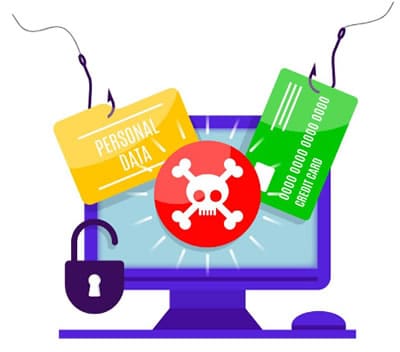The latest cybersecurity threats and how to protect yourself
Cyber security threats are constantly evolving, and it can be difficult to keep up with the latest trends. As technology advances, so do the threats that put our online security at risk. However, there are some basic steps you can take to protect yourself from the most common attacks.
Contents
Latest cybersecurity threats to be aware of, and how to protect yourself:
1. Phishing attacks
Phishing attacks are a type of social engineering attack that involves tricking individuals into revealing sensitive information, such as login credentials or financial information. Phishing attacks can come in the form of emails, text messages, or even phone calls.
To protect yourself from phishing attacks, be suspicious of any unsolicited messages, especially those that ask for personal information. Never click on links in emails or text messages from unknown senders, and don’t open email attachments unless you’re sure they’re safe.
2. Ransomware attacks
Ransomware attacks involve cyber criminals encrypting your data and demanding a ransom to decrypt it. Ransomware attacks can be very costly and disruptive, and they can affect both individuals and organizations.
To protect yourself from ransomware attacks, it’s important to back up your data regularly. You should also keep your software up to date and use a reputable antivirus program.
3. Malware attacks
Malware is a type of software designed to harm your computer or steal sensitive information. Malware can come in many forms, including viruses, worms, and Trojan horses.
To protect yourself from malware attacks, it’s important to keep your software up to date and use a reputable antivirus program. You should also be careful about what software you download and install on your computer, and only download files from trusted sources.
4. Social engineering attacks
Social engineering attacks involve tricking individuals into revealing sensitive information or performing actions that compromise their security. Social engineering attacks can be carried out in person, over the phone, or online.
To protect yourself from social engineering attacks, be careful about who you give personal information to. Never give out your login credentials or financial information to someone you don’t trust.
5. DDoS attacks
DDoS attacks involve flooding a website or server with traffic, making it unavailable to legitimate users. DDoS attacks can be very disruptive, and they can affect both individuals and organizations.
To protect yourself from DDoS attacks, it’s important to use a reliable web hosting provider. You should also have a plan in place in case your website or server is attacked.
In addition to the threats listed above, there are a number of other emerging cybersecurity threats that you should be aware of. For example, cyber criminals are increasingly targeting mobile devices and IoT devices.
Tips for protecting yourself from cybersecurity threats:
- Use strong passwords and enable multi-factor authentication on all of your accounts.
- Be mindful of what information you share online.
- Keep your software up to date.
- Be careful about what emails you open and what attachments you download.
- Use a reputable antivirus program and keep it up to date.
- Back up your data regularly.
By following these tips, you can help protect yourself from the latest cybersecurity threats.
New and emerging cybersecurity threats
In addition to the traditional threats listed above, there are a number of new and emerging cybersecurity threats that you should be aware of. These include:
1. Supply chain attacks:
Supply chain attacks involve targeting third-party vendors in order to gain access to an organization’s systems and data.
2. Deepfakes:
Deepfakes are videos or audio recordings that have been manipulated to make it look or sound like someone is saying or doing something they never actually said or did. Deepfakes can be used to spread misinformation or to impersonate someone in order to commit fraud.
3. Quantum computing:
Quantum computing is a new type of computing that has the potential to break many of the encryption algorithms that are currently used to protect data.
4. IoT Devices: Vulnerable Entry Points:
The Internet of Things (IoT) has brought convenience to our lives, but it has also introduced a new avenue for cyber threats. Weakly secured IoT devices can be gateways for hackers.
To safeguard your IoT devices:
- Change default passwords on all IoT devices.
- Keep device firmware up to date.
- Segment your network to isolate IoT devices from critical systems.
It is important to stay informed about the latest cybersecurity threats and to take steps to protect yourself. You can do this by following the tips above and by subscribing to security blogs and newsletters. Remember that cyber security is an ongoing process, and the more you invest in protecting yourself and your digital assets, the more resilient you become against the threats of the modern age. Stay safe, stay secure, and keep evolving with the digital wo

